“It’s one of the biggest crimes in British history that no one’s ever heard of”: Michael Socha, Sophie McShera and Shane Meadows on The Gallows Pole
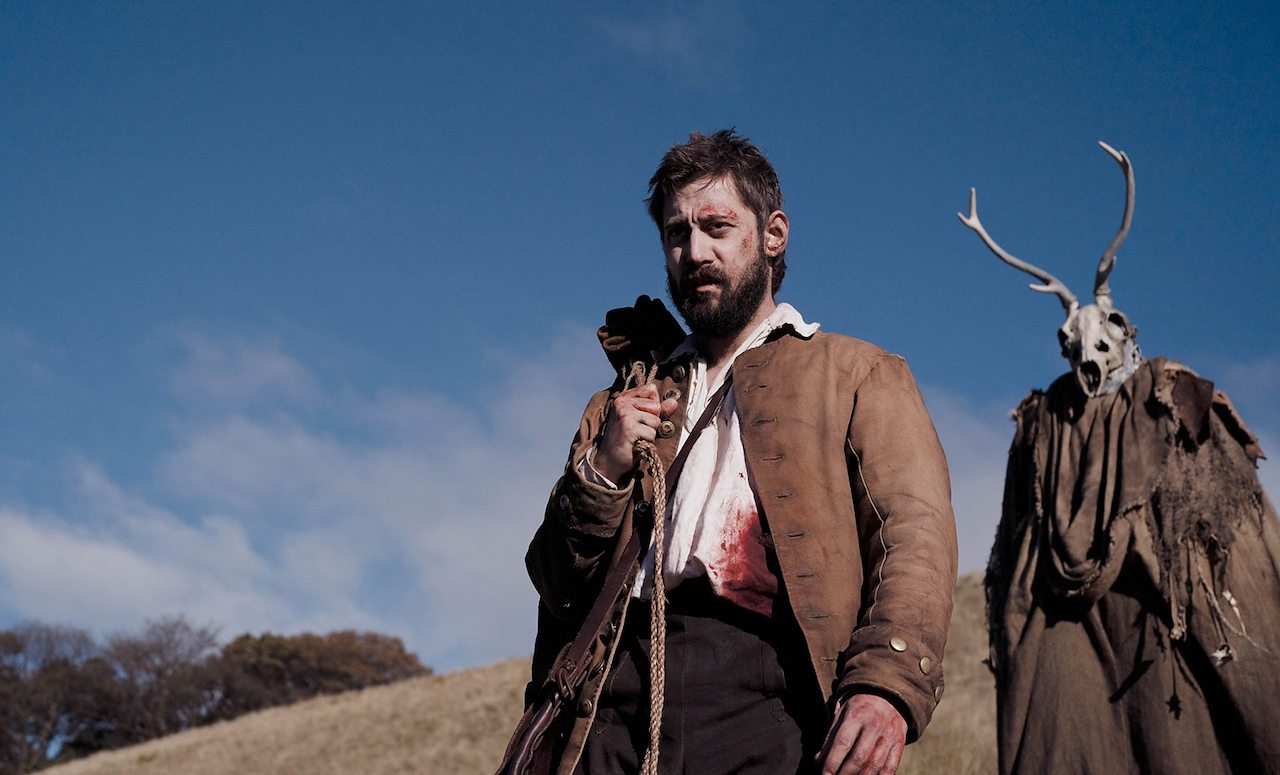
The Gallows Pole is a three-part series that fictionalises the historical events of the Cragg Vale coiners in 18th-century Yorkshire, at the start of the industrial revolution. Based on the novel of the same name by Benjamin Myers, the drama follows David Hartley (Michael Socha) who, having previously parted ways with his partner (Grace, played by Sophie McShera) and friends from the village, returns unexpectedly and gathers the townsfolk up to start an illegal workforce of coiners. It will bring profit to the entire town, but will also end up being one of the biggest frauds in British history.
The Upcoming had the pleasure of speaking to cast members Socha and McShera, and director Shane Meadows, about bringing this story to screen, being part of this amazing ensemble cast and the incredible music that sits alongside the historical reimagining of those events.
Can you tell us what drew you to the story of The Gallows Pole and why this was a project you decided to take on?
Shane Meadows: I was looking back at my past and taking clips of bits of stories – I had been looking inward or backwards, looking at my own childhood a lot of the time – so, before I saw Ben’s book, I was looking to break out and look for a story that wasn’t my own or coming from something from when I grew up. The first thing with the book is that it has a cover that felt like Trainspotting in the 1700s – I mean, if you want to grab my attention! I know you can’t judge a book by its cover, but it was this vivid lime green with these gold coins and this sort of silhouetted face, and I remember reading the letter and thinking, “Why does someone want me to do a period piece?” – but that’s my problem, as I was assuming it was going to be all frills and carriages. Obviously, then I read the book, went online to check if it was true and discovered it’s one of the biggest crimes in British history that no one’s ever heard of. The Bank of England nearly collapsed towards the final stages of what was going on!
More importantly, I could see within the book that there was a community. With Romeo Brass and This Is England, you’ve obviously got your leading characters that people will identify with, and you’ve got David and Grace in this, but there’s also this beautiful bedrock of a community, which I was really drawn to. I think the initial thing was, “Why on earth is this story not being told? And how lucky am I to have a chance to maybe work on it?” – because I was imagining, with my sort of track record, which is nil in period dramas, I’d be getting really weird stuff set in a prison cell that can be done for a fiver. So this seemed way beyond what I would have imagined someone would think I was capable of, so I wanted to meet Ben. He’s an incredible man, [we’re] really likeminded. I was honest about the book; I said I thought it was lacking some female characters and, to bring it to the screen, some of them would need to be a lot more likeable than they were. Ben was just like, “Look, I took the facts and I created my novel – you can take my novel and the facts and create your series.” So once I got that blessing, that’s when we sort of set sail.
In a similar vein, Michael and Sophie, what drew you to the script into the story? What made you think, “I can really sink my teeth into this”?
Michael Socha: I didn’t have a clue about the story until we got asked to do the audition workshops, and then Shane started talking to us about it and I thought, “Right, I’ve got to read this book.” Then I read the book and I was like, “This is incredible – I really want to be a part of it.” You know that when you’re working with Shane you’re going to be doing something quite immense, something incredible. So the story itself and the chance to work with Shane again… that was just a draw in itself.
Sophie McShera: Yeah, similarly, my initial draw was Shane – I don’t think I even knew it was The Gallows Pole, it was just a project of Shane’s, and that was the biggest, exciting part. I just really wanted to work with him. I think maybe when I got there, or just before, I found that it was The Gallows Pole and I read the book and was like, “Oh my god! It’s this massive story all set in Yorkshire!”. I’m from Yorkshire and I didn’t even know it, so it was just doubly enticing. But, like Shane said, I didn’t read the book and go, “Which one of these amazing women am I going to play?”. [I was like,] “Shane, what’s the deal with female characters?” and he was like, straight away, “We really want to bring back the female characters” – it was so important to him. So, yes, I was just really drawn to the world and working with Shane and the story.
Shane, it’s interesting how you make the music almost its own character in this world of storytelling. Can you tell us about how you chose the songs and the score for this series?
SM: Initially, when we did the film This Is England, the executive producers were like, “What have you done? Piano and reggae? When has that ever worked?”. But weirdly, it became a character, so then you get to this series, The Gallows Pole, and this didn’t seem such an extreme idea – imagining that landscape, something that was kind of tough and rugged, the Stag Men wandering around. Then you’re starting to do your research and realising that, even now, people still talk about boggarts and all of these mythical fairy tales that exist around there. I started listening to Goat quite a lot around the same time, [who] are this kind of psychedelic folk band from the very north part of Sweden; no one knows what they look like as they wear these big wooden masks, yet they sound like a cross between sort of like Beth Ditto meets Simon and Garfunkel, cranked up to 90. There’s something about that mix, which I can sort of see, when you imagine people clipping coins… It’s hard to get the energy in with a lute or a harpsichord, so I started building this playlist and what’s amazing – because I fought Spotify, and iTunes and all of those things for a really long time – but then when I made the shift, once something sort of learns you, it starts recommending things you’ve never heard of and it became quite addictive building this playlist. Because, once you got to ten or 20 tunes, it would say “Have you heard about this man or dude in Iceland?” etc, and this whole idea of this kind of broken folk, this psychedelic folk thing started to lead the way. Because Goat had actually inspired that whole thing – they were the first people that I wanted to approach, so Nickie Sault, the producer (I was into the acting side doing all the workshops with the actors and really struggling for time), reached out to go to see if he’d be interested in not only helping us to license his music, but also creating some score. You never quite know until you put the images together, but it felt like a marriage made in heaven.
Shane, what about your process – did you find had to change things with this, as it’s a departure from your previous work? And Michael, how did working with Shane on this project differ from your previous projects together?
SM: I think, from my point of view, there were a couple of things. I mean, Covid, you know – I wanted to be as lean as possible and we did have a gigantic crew and it’s very difficult to find an incredible farmhouse, deserted, with a lovely tarmac road leading to it; and because of the period thing the costumes the whole nature… I mean, you shoot This Is England, and even now I could probably walk out of here and find a street and just paint out the satellite dishes and we could shoot on that corner, but in the 1760s that doesn’t exist anywhere other than fields – and even in the fields there’s wind turbines going, so I don’t think I realised until I got into it how risky and how difficult it was going to be to move the ship. And the ship was gigantic, so that was quite tricky. You’ve got a Covid team that’s bigger than the crew, so we’ve one person in a normal little car getting stuck on the lane – which happened pretty much every day – then the other 900 vehicles were all sat down the lane waiting to get up there, so that was tricky. But, as the shoot went on, we became a bit lighter. It was trying to manage improvising and changing things with a crew that really need a lot more information and warning than I would normally give, so it took a while to kind of balance that out.
MS: I think, with This Is England, I didn’t really have to prep with a lot of research or really concentrate on certain things when I was playing Harvey, and also from when I joined the main cast in ’86, it was sort of an embedded friendship all the way through and the period wasn’t a time too far from the one I actually live in. But with David, it was all change. I suppose I knew a few of the cast in this, but then sort of mixing with a whole new group of people in the same sort of way that you would with This Is England and seeing how easily they sort of formed again on The Gallows Pole – [they] became equally as tight as they were for me on This Is England; I’ve got some really good friends now off the back of shooting The Gallows. Obviously, the period, the scale of everything, I think, was – like Shane already said – just massive. And just having to think about the role so much more than I would with Harvey. I could literally wake up in the morning and just crack on with him, whereas this one… it took a lot more.
Sophie, obviously you’ve done improvisation acting work previously, but how was it to work in this structure on this series? I particularly recall a scene in the first episode, with Michael, when you are sitting on the ground outside away from each other but near enough to talk.
SM: I really liked it. I really liked not having to learn the lines; I really liked the freedom of not trying to fit myself into someone else’s idea of my character, if that makes sense. I was scared on my way to my first audition with Shane because I didn’t really know if I’d know what to do or if I could improvise this – although I’d done that style of acting before, but not with Shane. But I really liked it, it felt really freeing and it actually feels so instinctive: you can’t really overthink it in a way that you probably could overthink. I remember filming that scene where me and Michael are talking, there’s a wall in between… we did one and then I think we were doing another and there was a bit of time in between, and I thought, “Oh god, on a normal set I’d probably now be thinking, ‘What are the lines for the next bit?'” – but I just sat and looked at the sky. And just that feeling before a take – to just be in whatever you want it to be in – was really magical. And it meant that everything that comes out just comes out… within reason. You know, you’re in character and you’re in the scene but that feeling was really nice, I really enjoyed improvising.
I just want to come back to the point that Sophie and Shane you were making earlier about the women in this – I was quite taken aback by how much agency these women have. What was it like bringing Grace to life, Sophie?
SM: It was amazing. I felt like Shane really understood what Grace could be and should be; I felt like I had permission to be all these things, but I think she wasn’t this conversion of a badass woman, which we can often say she was. She’s complicated and she’s a real person and she can have agency but she can still be sad and pissed off, she can still be in love with this guy because she’s powerful. Shane and I had a conversation about Northern women and that’s very in there – the women I’ve grown up with, the women in my family, my community, that’s what I was thinking of when we were building this place, this community and this character. So, yeah, that didn’t feel like a big ask to make. I get what you’re saying in terms of historical context, but I think we just wanted to redress the balance a bit and just give a version of a community which is completely plausible. It is a community-based crime, and… as if the women were all just sat at home letting it happen! They were involved, just like the kids were involved in it. So I think it would have been madness to not do that. I don’t think is unrealistic.
Shane, can you tell us about the inclusion of the Stag Men? They’re there throughout the whole series – were they referenced in the book too?
SM: Yes they are. I don’t think Sophie was on this particular trip – I think Michael and I went, and I don’t know what you’d call the guy, but you know when someone lives round here and they do a ghost tour? Well, this man was a kind of an expert in folklore and you’d be stood on a hill and there’d be like a sort of little cave in the distance and he talks about how in the 1760s people believed that demons and Stag Men were flying into this cave, and it was like a portal to another. Rumours of the Stag Men being on the moors… you can imagine if you were walking back from Birmingham, you haven’t eaten for three days, I bet you could see all kinds of shit. What was really prevalent was how that hadn’t died; people still spoke about boggarts and the Stag Men and there’s actually something really romantic and beautiful about that. I think when you’re surrounded in Yorkshire in proper darkness… Well… what we think of as nighttime but it is sort of littered with the council’s LED system all across – I haven’t seen a star for about 14 years, whereas they were faced with that incredible universe on a nightly basis, and obviously moonlight and shadows. I think in Ben’s book there was a real connection to David – I think they come into his room and dance around in a circle within his room on this kind of evening, so there was obviously the fact that Ben had got it in there and, as we were doing this research, I realised that it was really anchored in that community.
I’d always had this kind of love affair with a show in the 80s called Robin of Sherwood. Those first two seasons, you’d have Robin doing all of the classic holding people up in the castle, but then, you know, Robin would get sad or Marian would be kidnapped, he wouldn’t know how to get to her, so he’d go out to the woods, all sad and forlorn, and speak to Herne the Hunter. There was something about that relationship. You don’t want to come and just do what’s been done before. but you also don’t want to take the mickey and just make everything a twist, or modern, or whatever, so we did it as an experiment, really, me and Michael. It wasn’t in my script, or wasn’t really written into my treatments, but when we were on-set I said, “I’d love to shoot a conversation, they’re going to meet on the Moors” – and the ongoing relationship became something that I was really attracted to. Me and Michael did the first one and… imagine a whole episode of I’m A Celebrity in the jungle, where no one laughs at Ant and Dec’s jokes at all – it’s just dead silence. Try improvising through that, baby!
So we carried on for about an hour, and no one found any of it remotely entertaining and I got it into the edit and I thought, “That died a death.” But I’m wondering whether it died a death because I was speaking through a Bluetooth speaker; the fog, you know, it didn’t look as lovely as it did on the camera, and I watched it being put together and the first one’s fairly serious and I just sort of thought, “I think we can do this and who knows where it would go in future seasons.” We shot one and, I think, in the last one we did, Grace is in there as well, and both David and the Stag Men don’t think Grace will be able to hear it because it’s a mystical relationship just between them two, so when she wakes up she is kind of embroiled in it as well as them. So it’s probably going to get ridiculous and become something that only maybe me and Michael – maybe only me – will find funny. But I kind of love that as a motif – to sort of say, “Look, yes, this is period, but it’s kind of not taking itself too seriously the idea of a relationship between a six-foot dude with massive horns, the kingdom and the coiners. I loved it and it was hard to push through because the first one died a death, but we carried on. “Repeat until funny,” as my wife says.
Ezelle Alblas
The Gallows Pole is released on BBC Two and BBC iPlayer on 31st May 2023.
Watch the trailer for The Gallows Pole here:

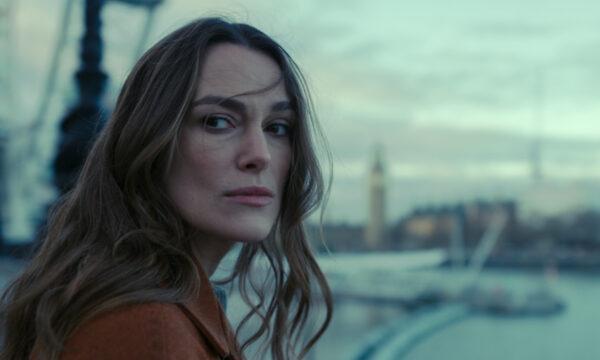
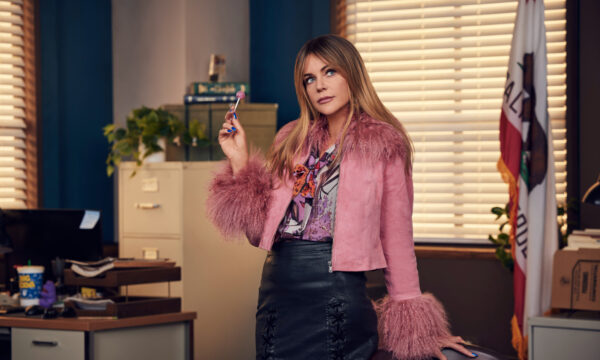
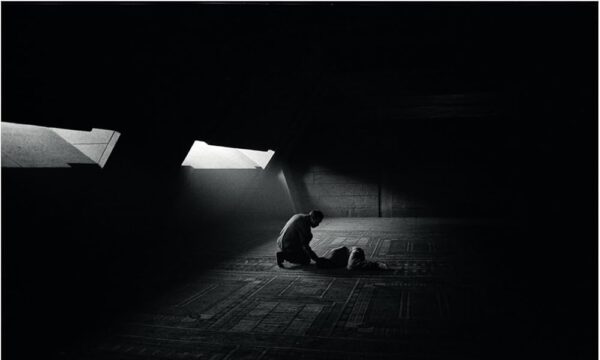
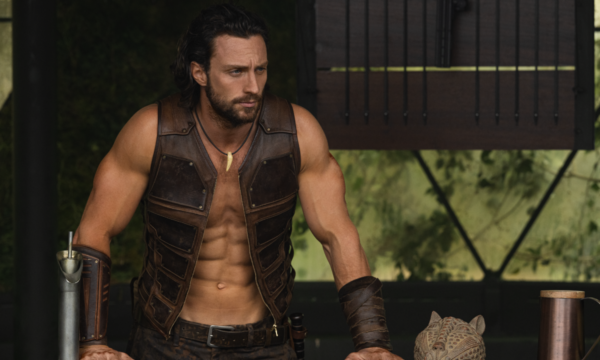
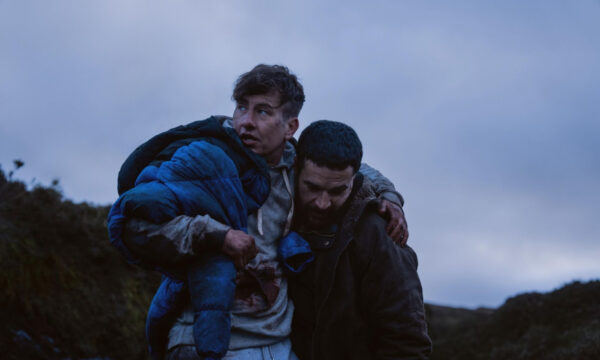
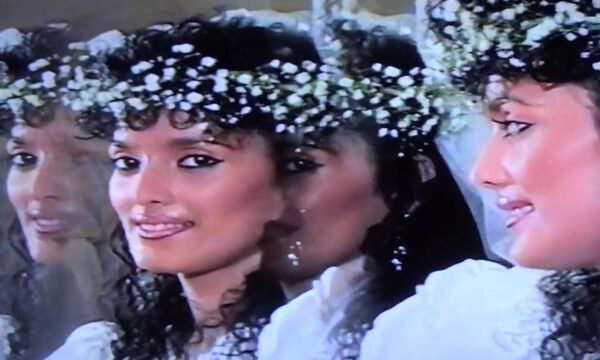
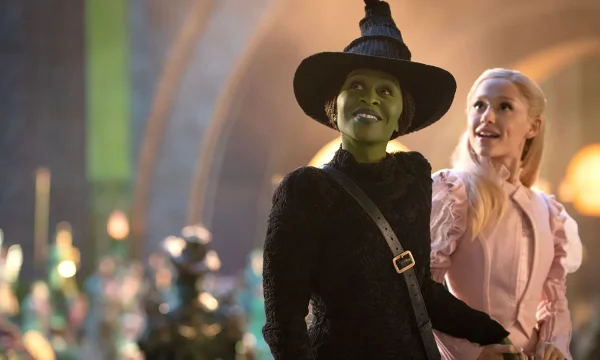
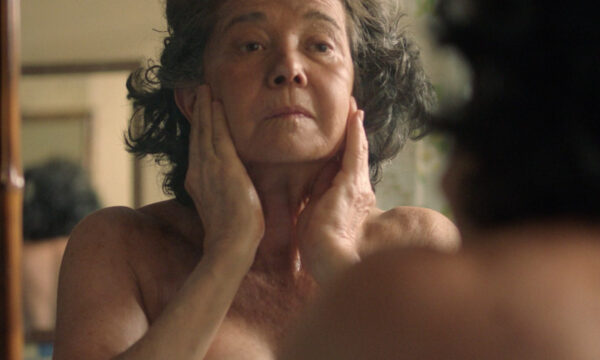
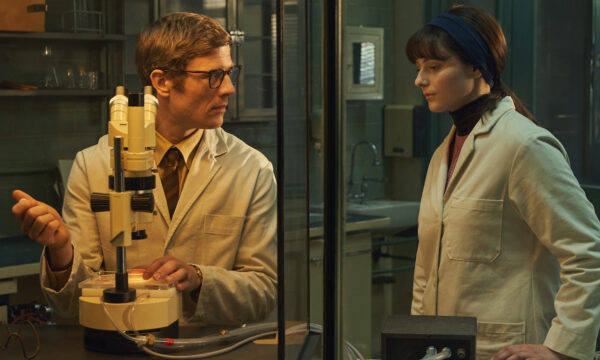

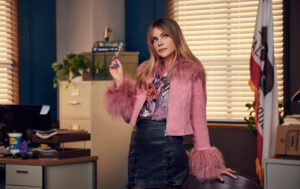







Facebook
Twitter
Instagram
YouTube
RSS